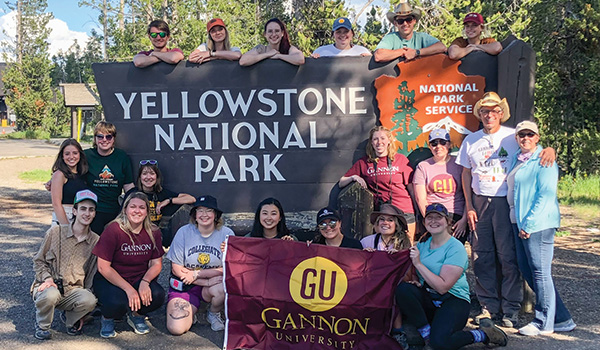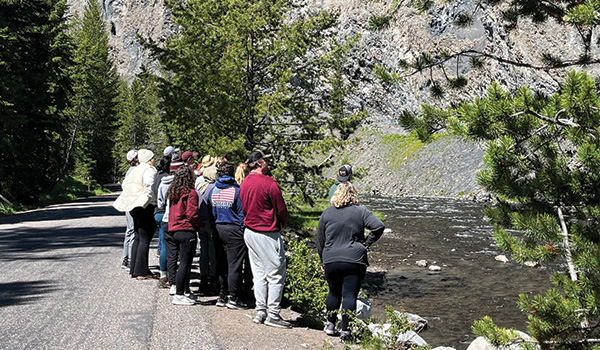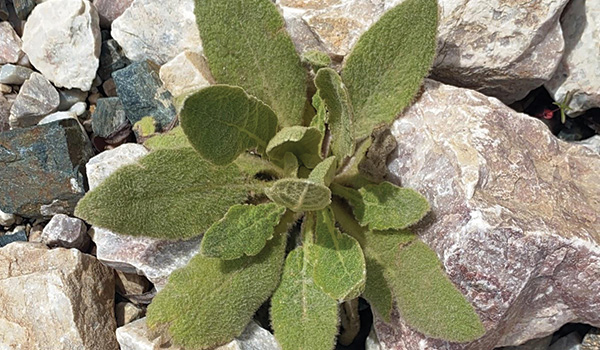As the sun rises above the rugged landscape of Yellowstone National Park, a hushed circle of young researchers gathers. They lean in, their ears catching every rustle of leaves and distant birdsong. The air holds a palpable anticipation, a shared curiosity among the students aiming to detect the presence of the elusive pika.
A small, guinea pig-like animal, the pika’s loud, high-pitched calls are crucial in determining its location as it camouflages itself among talus slopes. These angular, jagged rocks formed when old lava flows cooled quickly, offering a prime hiding place for the pika’s egg-shaped body and light brown and grey fur.
The students speak a silent language using only hand signals. They record pika calls and sightings, as well as the discovery of any food caches and latrine sites. This routine continues for about an hour until the students gather enough information to determine the pika presence in the area.
But why is the pika so important? As the world grapples with the profound challenges of a changing climate, Gannon University students are illustrating that sometimes, it’s the tiniest voices that speak the loudest in the grand narrative of environmental change.
"The Yellowstone trip was one of the best experiences I have had at Gannon.”... You can tell by their enthusiasm that Dr. and Mrs. Ropski love what they do and enjoy teaching students about the park.”
- Anna Betler
Gannon’s Inspired Faculty-led Travel (GIFT) course to Yellowstone National Park has been led by Gannon biology faculty and husband-and-wife team Dr. Steven Ropski ’78 and Melanie Gustafson-Ropski since 2014. Their goal? Monitoring the elevation change and distribution of the American pika.

The elusive pika
A charismatic and resilient mammal, the pika has emerged as a poignant indicator species for the far-reaching effects of climate change. Pikas have been forced to shift their habitat higher on mountain slopes to escape rising temperatures in lower elevations in areas like California, and the pika in Yellowstone may follow the same pattern. This upward trend would eventually lead the pika to run out of mountain, threatening their survival as they cannot withstand temperatures above 78 degrees.
“As an indicator species, the well-being of the pika reflects the well-being of the environment around it, including other animals,” Ropski said.

Students pose in front of Yellowstone National Park’s west gate.
The pika’s movements serve as an urgent alarm for a warming climate – and Gannon students are more than willing to answer the call.
In cooperation with the National Park Service and their Citizen Science project, the GIFT class performs a point census in the Hoodoos each year to determine pika presence. The students sit in a circle roughly 15 feet apart, staying as motionless as possible to allow pikas and observers to acclimate to each other. They record calls for an hour, including how many times calls are heard and in what direction. Food caches, otherwise known as hay piles, as well as latrine sites can also suggest animal presence in the area.
This is uploaded to the National Park Service database, allowing park service researchers to determine if management strategies need to be deployed to help the species. In 2022, a second survey site was added at Palisade Falls in the Hyalite Recreation Area south of Bozeman, Montana.

Students learn about a lava formation at Fire Hole River.
“Citizen Science projects like this are absolutely essential because the park service does not have the manpower to gather data,” added Ropski. “So, we volunteer and expose the students to hands-on research.”
Pika in Yellowstone have not yet shown signs of a warming climate, despite minor changes around them, including shallower streams and changes in hillside vegetation. However, given what pika are experiencing in California and other regions, ongoing research in Yellowstone is critical to detect early signs of climate-induced stress.
While the Yellowstone trip presents an important mission, an enriching experience lies beyond the research and data for both Gannon students and the faculty who facilitate it.
"Seeing the look on a student’s face when they first see that animal or plant they wanted to see … it’s just exciting.”
- Melanie Gustafson-Ropski
“The Yellowstone trip was one of the best experiences I have had at Gannon,” biology student and trip attendee Anna Betler said. “You can tell by their enthusiasm that Dr. and Mrs. Ropski love what they do and enjoy teaching students about the park.”
Surveying pika is just one part of the Yellowstone trip; in fact, students spend time researching and observing various flora and fauna, all culminating in a final portfolio of their experience.

Mullein plant
“People always ask me: ‘How can you go back every year? Doesn’t it get boring?’” said Gustafson-Ropski. “I always say ‘no.’ Seeing the look on a student’s face when they first see that animal or plant they wanted to see … it’s just exciting.”
The next Yellowstone GIFT trip is set for June 2024, and roughly 18 new faces who have never seen the park will join the ranks of young researchers on the mountain, listening for the pika’s call – and the subtle sounds of change along with it.